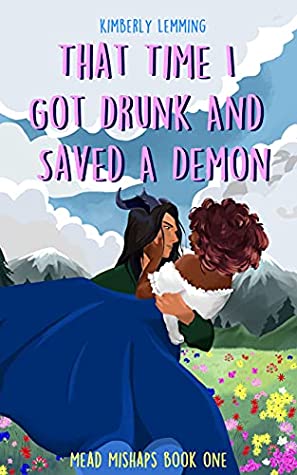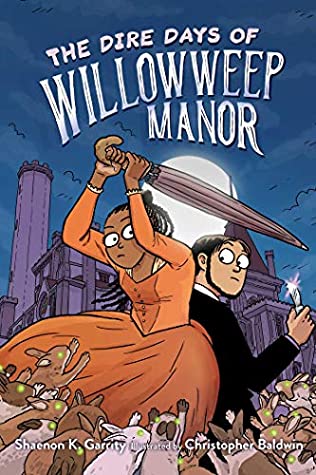
Summary [courtesy of Goodreads]: One dark and stormy night, Haley sees a stranger drowning in the river. Since her greatest passion is Gothic romance novels, she knows her moment has come. But when Haley leaps into the water to rescue the stranger, she awakens in Willowweep. It certainly looks like the setting of one of her favorite books: A stately manor. A sinister housekeeper. Three brooding brothers. There’s even a ghost. Except Willowweep is not what it seems. Its romantic exterior hides the workings of a pocket universe—the only protection our world has against a great force of penultimate evil, and its defenses are crumbling. Could cruel fate make Haley the heroine that Willowweep needs?
_________________________
[Note: This review is based on an eARC from NetGalley and Margaret K. McElderry Books [Simon & Schuster Children’s].]
This is an incredibly fun graphic novel that blends gothic and early-19th-century romantic tropes with a contemporary satirical take on the multiverse and pocket dimensions. If you like Kate Beaton’s Hark, A Vagrant! series, you might enjoy this, the adventures of earnest, gothic-obsessed high-schooler Haley, who stumbles into a mashup gothic/romantic dimension after saving a man from drowning in the local river.
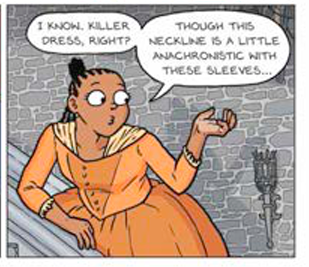
While the art style isn’t 100% my thing, it works here, and I appreciated the attention to detail in some panels despite the more simplistic style. Speaking of which, while I wish these Black-centered comics were more frequently written and illustrated by Black creators, at least the detail creates a character who isn’t just darker-complected but otherwise racially unmarked. For instance, when Haley wakes up after her first night in Willoweeep Manor, she wears a flowing nightgown AND a matching satin sleep bonnet. It’s not remarked on, it’s just there–the pocket universe provides what its inhabitants require, in a way that real-life [non-ownvoices] creators don’t always manage. This is a tiny thing, and I’m hardly the person to provide a solid review of how this book handles (or fails to handle) race, but it seemed like a step in the right direction.
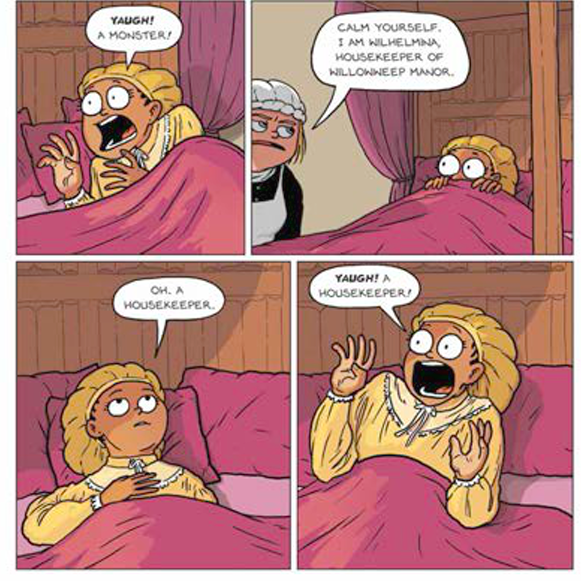
Haley’s personality was really fun and perfectly suited to this kind of high-stakes-but-really-no-stakes type of story: she’s down for anything and she’s OVER THE MOON to be in this gothic fantasy land, at least at first. I appreciated her arc by the end of the story and how she evolved from the ‘maiden’ archetype (assigned by the genre-aware pocket universe) to the ‘heroine’ role. The “real-world” frame around the story was also fun, from Haley’s exasperated teacher who begs her to write a book report on ANYTHING but Wuthering Heights (much as she begs Haley’s classmate to focus on something other than Sonic the Hedgehog fanfic) to the fairly silly “bullies” who tease Haley for being a princess at the beginning and “a DIFFERENT kind of nerd” by the end.
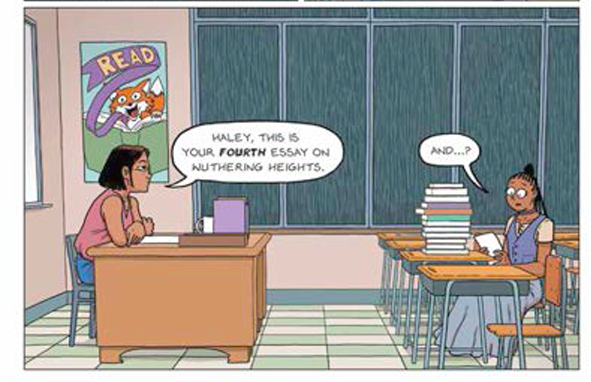
The tone of the book is fairly lighthearted, though there are higher-stakes moments and deeper thoughts peppered throughout. I loved the ghost (who only Haley can see) and the surprising ‘reveal’ of her true form halfway through the book. Relatedly, the author and illustrator played with the concept of a semi-sentient pocket dimension in both silly and profound ways, which gave a good balance to the overall narrative. (If you like pocket universe/multiverse stories but want a darker satirical take, consider Nino Cipri’s novella Finna and its sequel Defekt, which focus on an Ikea-style, corporatocracy-decrying, monster-hunting multiverse.)
There’s also some background queer rep revealed at the end, when two presumed heterosexual women are reunited as lovers. It’s very cute, though it would’ve been nice for some of the main characters to have some type of LGTBQIA+ identity/s, since the book is all about undermining the gothic genre. Oh well.

